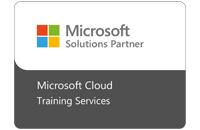We're open through the holidays to support your upskilling goals — book your session today!
We're open through the holidays to support your upskilling goals — book your session today!
Unable to find what you're searching for?
We're here to help you find it


Administering Microsoft SQL Server 2022 Course Overview
The Administering Microsoft SQL Server 2022 course from Koenig Solutions is designed for IT professionals and database administrators who want to master the skills needed for maintaining a modern MS SQL database. This comprehensive program covers all the essentials, from initial installation and configuration to advanced topics like security, data protection, performance tuning, high availability, automation, monitoring, and cloud connectivity. By the end of this course, you will be confident in managing SQL Server 2022 database environments effectively and efficiently.
Microsoft SQL Server 2022, the latest release from the Microsoft Corporation, introduces powerful enhancements that boost performance, tighten security, and deepen cloud integration. These new capabilities significantly improve the experience for administrators and developers working with Microsoft SQL Server.
Some of the standout new features include:
Azure Synapse Link for SQL: This allows for near real-time data analysis without impacting the performance of your main database.
Object Storage Integration: You can now connect to S3-compatible object storage, making backups and data management more flexible and cost-effective.
Contained Availability Groups: This feature simplifies the management of users, logins, and permissions within high-availability environments.
Microsoft Defender for Cloud Integration: Provides enhanced security to help you protect your databases across different environments.
One of the most exciting performance enhancements is the Parameter Sensitive Plan Optimization feature. This intelligent function helps SQL Server create more efficient execution plans for queries, improving performance for existing workloads without needing any changes to the application code.
Successfully delivered 38 sessions for over 48 professionals
Purchase This Course
USD
View Fees Breakdown
| Course Fee | 3,510 |
|
Total Fees |
3,510 (USD) |
USD
View Fees Breakdown
| Course Fee | 2,700 |
|
Total Fees |
2,700 (USD) |
USD
View Fees Breakdown
| Flexi Video | 16,449 |
| Official E-coursebook | |
| Exam Voucher (optional) | |
| Hands-On-Labs2 | 4,159 |
| + GST 18% | 4,259 |
|
Total Fees (without exam & Labs) |
22,359 (INR) |
|
Total Fees (with Labs) |
28,359 (INR) |
Select Time
Select Date
| Day | Time |
|---|---|
|
to
|
to |
♱ Excluding VAT/GST
You can request classroom training in any city on any date by Requesting More Information
Inclusions in Koenig's Learning Stack may vary as per policies of OEMs
Scroll to view more course dates
You can request classroom training in any city on any date by Requesting More Information
♱ Excluding VAT/GST
*Inclusions in Koenig's Learning Stack may vary as per policies of OEMs
Suggestion submitted successfully.
Koenig Learning Stack
Inclusions in Koenig's Learning Stack may vary as per policies of OEMs



